Plates
Plate I—Map showing the geology of Kansas and the adjoining region. [Also available as a larger Adobe Acrobat version, 5.3 MB.]
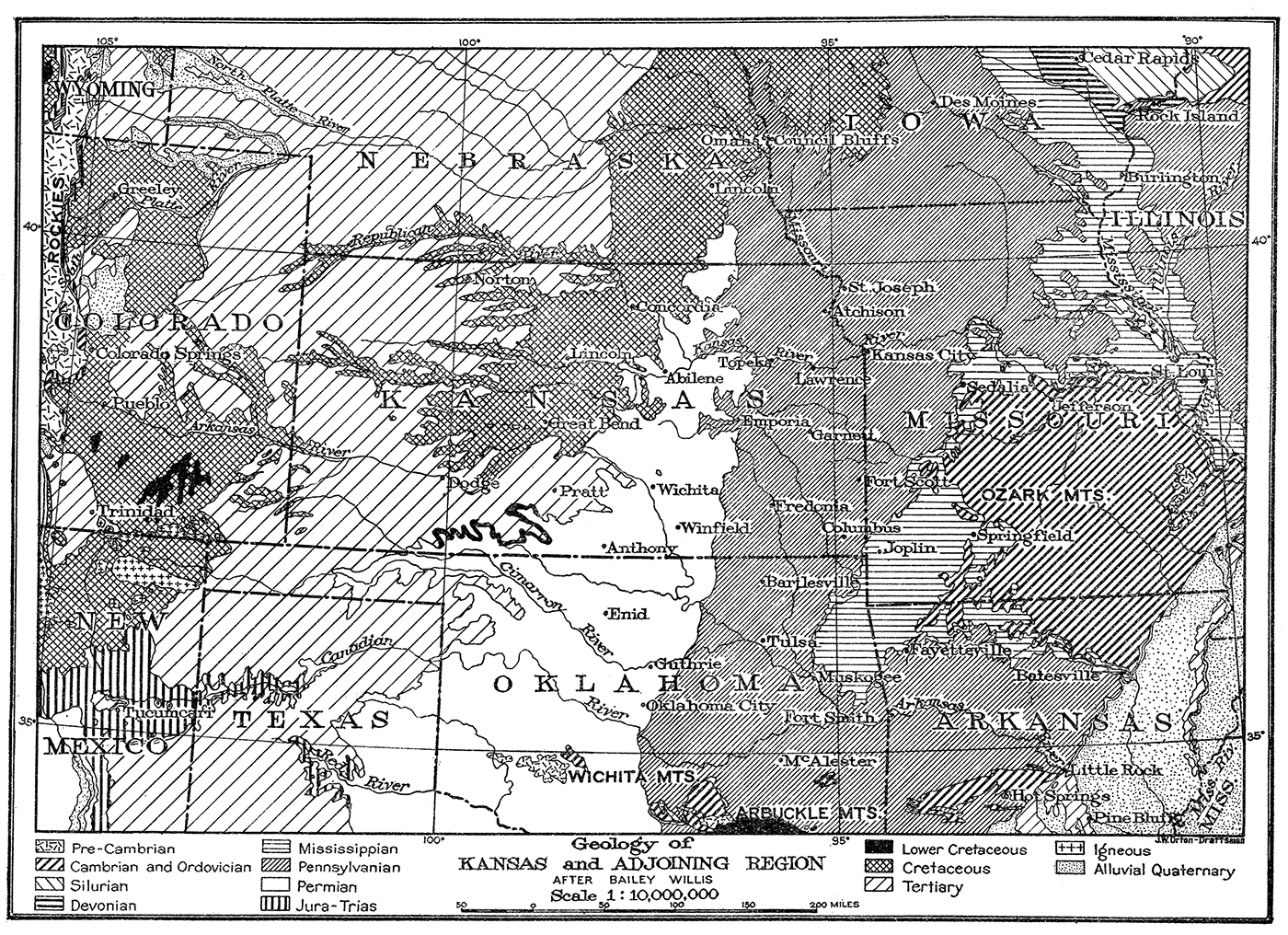
Plate II—Geologic cross section in an east-west direction across the Kansas region. [Also available as a larger Adobe Acrobat version, 812 kB.]

Plate III—Typical fossils of the Cherokee and Marmaton formations. Corals: Chaetetes milleporaceus, part of a colonial growth broken to show the slender, closely packed corallites, (12); Axophyllum rude, a small, straight horn coral, viewed from the side, (14). Bryozoans: Fistulipora nodulifera, a massive, growth composed of very minute cells which open outward in tiny apertures (11). Brachiopods: Chonetes mesolobus; a small concavo-convex shell the middle portion of which is marked off in a small, distinct lobe, (1) view of concave brachial valve, (2) view of convex ventral valve; Marginifera muricata, a shell of the Productus type with rather coarse ribs and small spines, (3) Squamularia perplexa, a rounded shell with prominent beaks, the surface marked by fine radiating spines and concentric growth lines, (5) brachial view, (6) side view; Composita subtilita, one of the commonest Pennsylvanian fossils, side view, (7); Pustula punctata, a large Productus type shell with very numerous small spines arranged in distinct concentric bands, (15) side view, showing convexity of ventral valve, (16) ventral view. Pelecypods: Nuculopsis ventricosa; small, smooth-shelled, with very convex valves, (10); Aviculopecten interlineatus, a small scallop with prominent concentric ridges (13). Trilobites: Griffithides scitulus, a rolled up specimen (8) showing head shield, (9) side view. [Also available as a larger Adobe Acrobat version, 2.4 MB.]
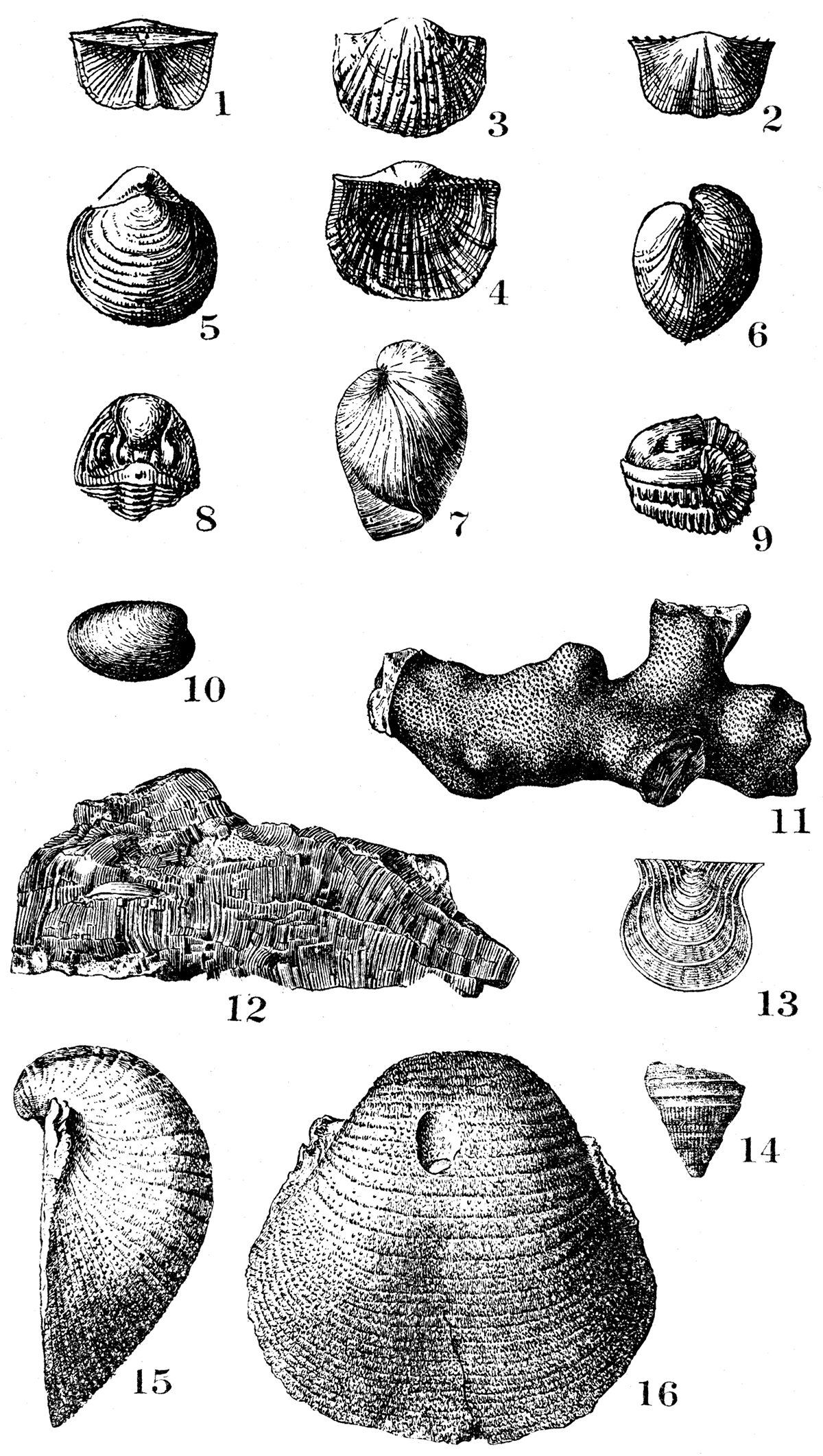
Plate IV—Typical fossils of the Kansas City formation. Corals: Lophophyllum distortum, a slender, straight horn coral with thin walls and a small central axis or pseudocolumella, 19; Campophyllum torquium, a robust coral which in some instances grows more than a foot in length, extremely abundant in some Kansas limestones, 2. Crinoids:, Cromyocrinus kansasenais, 11; Eupachycrinus verrucosus, 12, calyces of robust species. Bryozoans: Septopora biserialis, one of the lace pattern type, 18. Brachiopods: Orbiculoidea convexa, a primitive but unusually large round shell with a conical point, 1; Derbya crassa, a flat shell with radiating ribs which is very common in some beds, 3; Hustedia mormoni, a small form with coarse ribs and prominent beaks, 4 ventral valve, 5 dorsal valve; Spiriferina kentuckiensis, distinguished by its coarse ribs, fine concentric surface lines and shape, view of hinge line 6, ventral valve 7; Chonetes verneuilianus, marked by a deep, angular depression on the ventral valve, 10., Pelecypods: Pseudomonotis hawni, a somewhat irregular shell with ribs of unequal size, 13; Schizodus wheeleri, nearly smooth but with a prominent ridge extending from, the beak, 14; Myalina swallovi, a small, very oblique shell with the beaks at the sharp point, 16 view along hinge line, 17 side view, Gastropods: Pharkidonotus percarinatus, a roughly knobbed shell coiled in a single plane, side view 15. [Also available as a larger Adobe Acrobat version, 2.8 MB.]
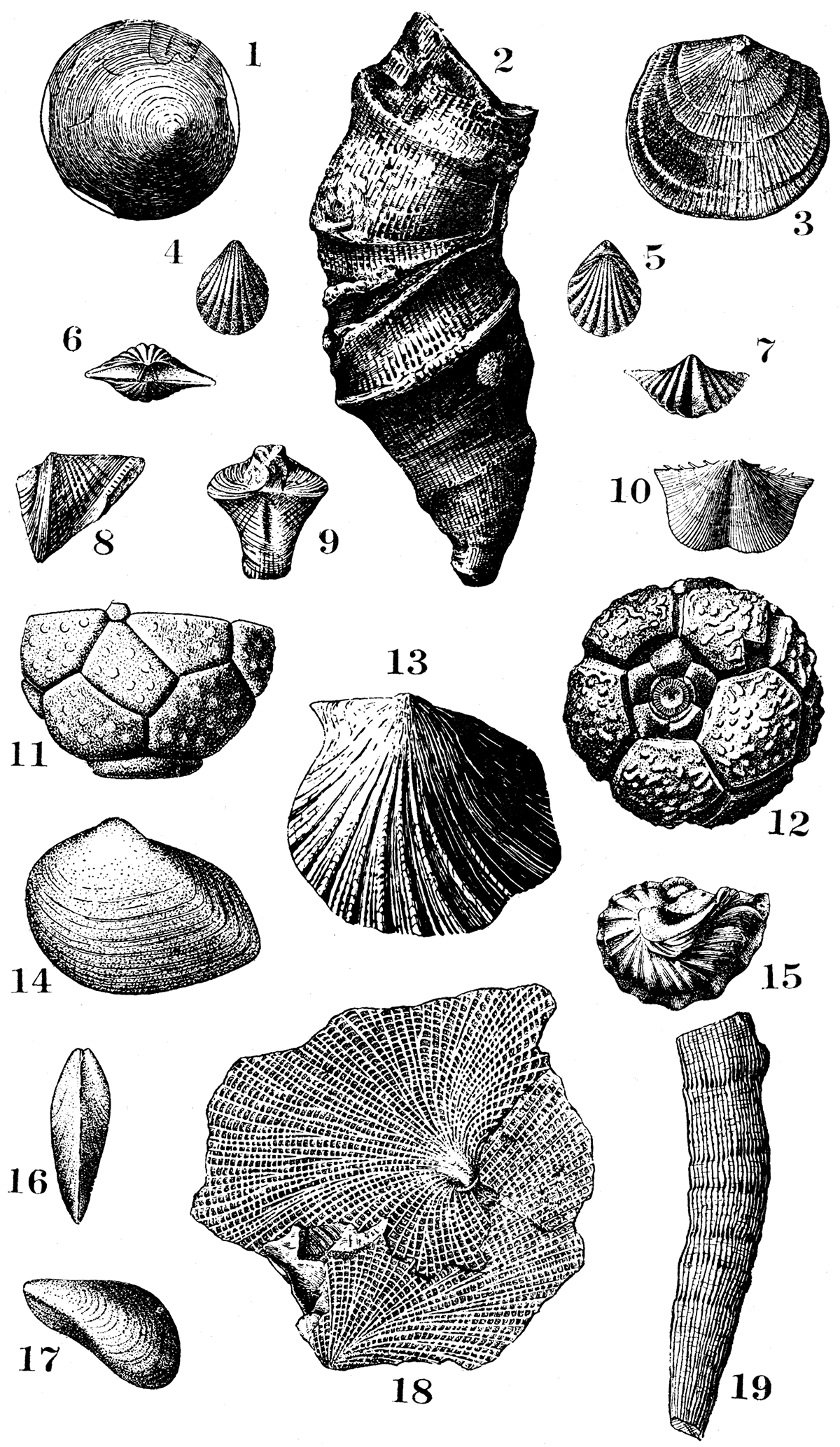
Plate V—Typical fossils of the Lansing, Douglas, Shawnee and Wabaunsee formations. Protozoans: Fusulina sp., examples of the small spindle-shaped fossils which are so common in many of the Pennsylvanian and Permian limestones of Kansas, 5, 6. Corals: Lophophyllum profundium, a small horn coral with very prominent central axis or pseudocolumella which in broken or weathered specimens may project from the calyx, 4. Echinoids: Archeocidaris aculeata, example of a sea-urchin spine which is common in some beds. Bryozoans: Fenestella shumardi, a delicate colony of the lace pattern type, natural size 17, enlarged fragment showing the apertures of the individual zooids, 17a; Rhombopora lepidodendroidea, a slender branching growth with the almost microscopic apertures of the individual animals on all sides, each aperture rhombic in shape, 15. Brachiopoda: Productus cora, a very common species with fine, somewhat flexuous ribs, ventral valve 2, dorsal valve 3; Chonetes granulifer, a gently concavo-convex shell with very fine radiating; ribs and short diverging spines along the hinge line, found in extraordinary numbers in some formations in Kansas, ventral valve 1; Meekella striatocostata, a shell of somewhat peculiar outline with large, rounded ribs marked by a pattern of finer ones, dorsal view 7; Spirifer cameratus, one of the most widely distributed and easily recognizable shells in the Pennsylvanian, its plications or ribs grouped into little bundles, dorsal view 9; Enteletes hemiplicata, a globose shell with small rounded beaks, coarse ribs which unite at the edges of the shell in a very jagged, zigzag line, and the surface marked by fine striations which radiate from the beaks, dorsal view 10, front view 11, side view 12; Hustedia mormoni, side view 16. Pelecypods: Limopteria longispina, a peculiar bivalte with a very long anterior wing and forward projection of the shell, side view 13; Edmondia aspenwallensis, a rather evenly convex shell with concentric, ridges, side view 14. [Also available as a larger Adobe Acrobat version, 2.5 MB.]
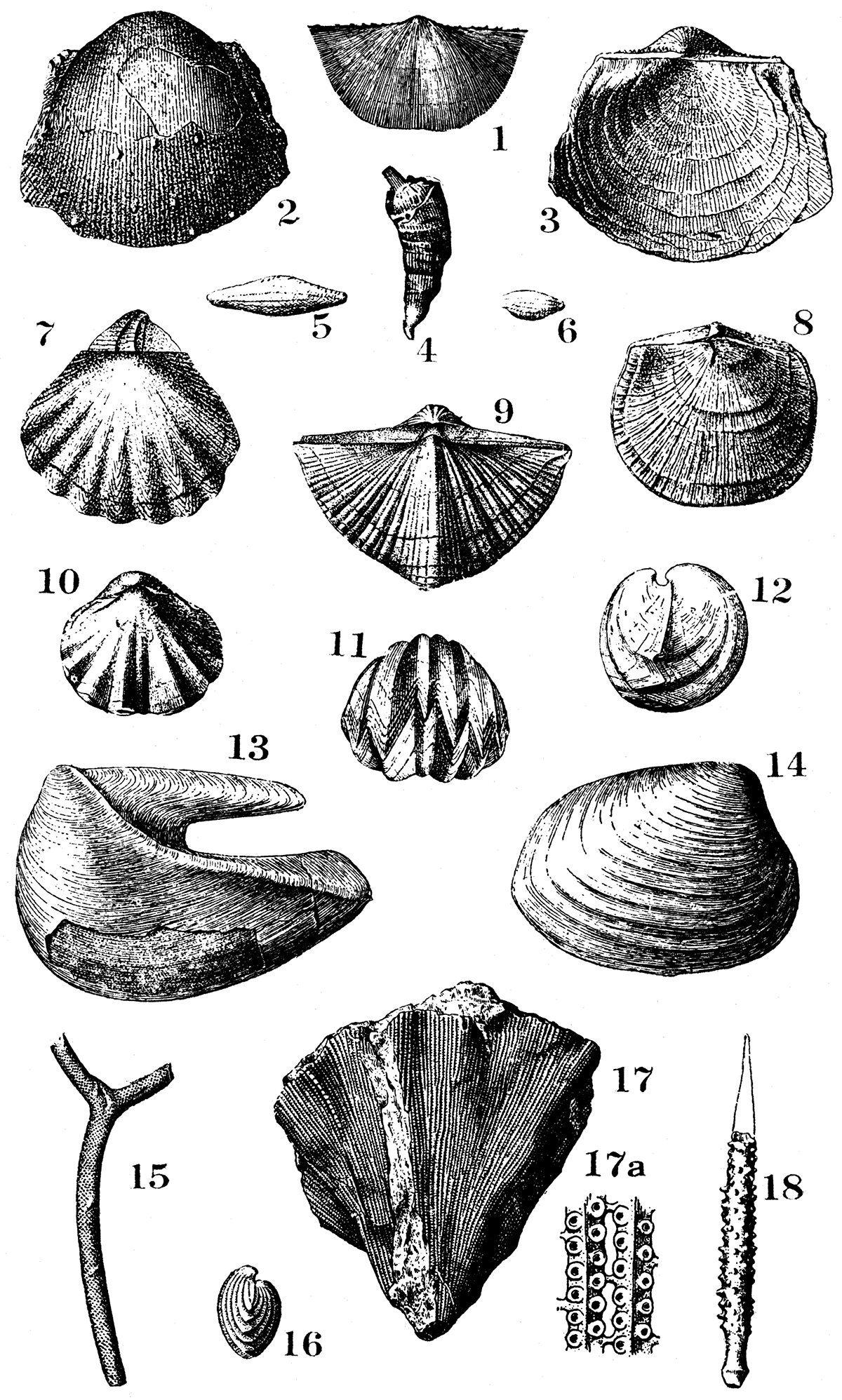
Plate VI—Typical fossils of the Permian in Kansas. Brachiopods: Pustula nebrascensis, one of the most abundant and widespread productids, the, surface of which is covered with the bases of innumerable spines, dorsal view 1, ventral view 2, side view 3; Chonetes granulifer, interior of dorsal valve 4 (see pl. V for exterior); Composita subtilita with two attached shells of Crania modesta, one of the most ubiquitous brachiopods of the Pennsylvanian 10; Meekella striatocostata, side view 11 (see pl. V). Pelecypods: Pleurophorus oblongus, 5; Aviculopecten occidentalis, 6 Bakewellia parva, 7; Myalina kansasensis, 8; Myalina permiana, 9; Pseudomonotis hawni, 12; Myalina recurvirostris, 13. [Also available as a larger Adobe Acrobat version, 2.9 MB.]
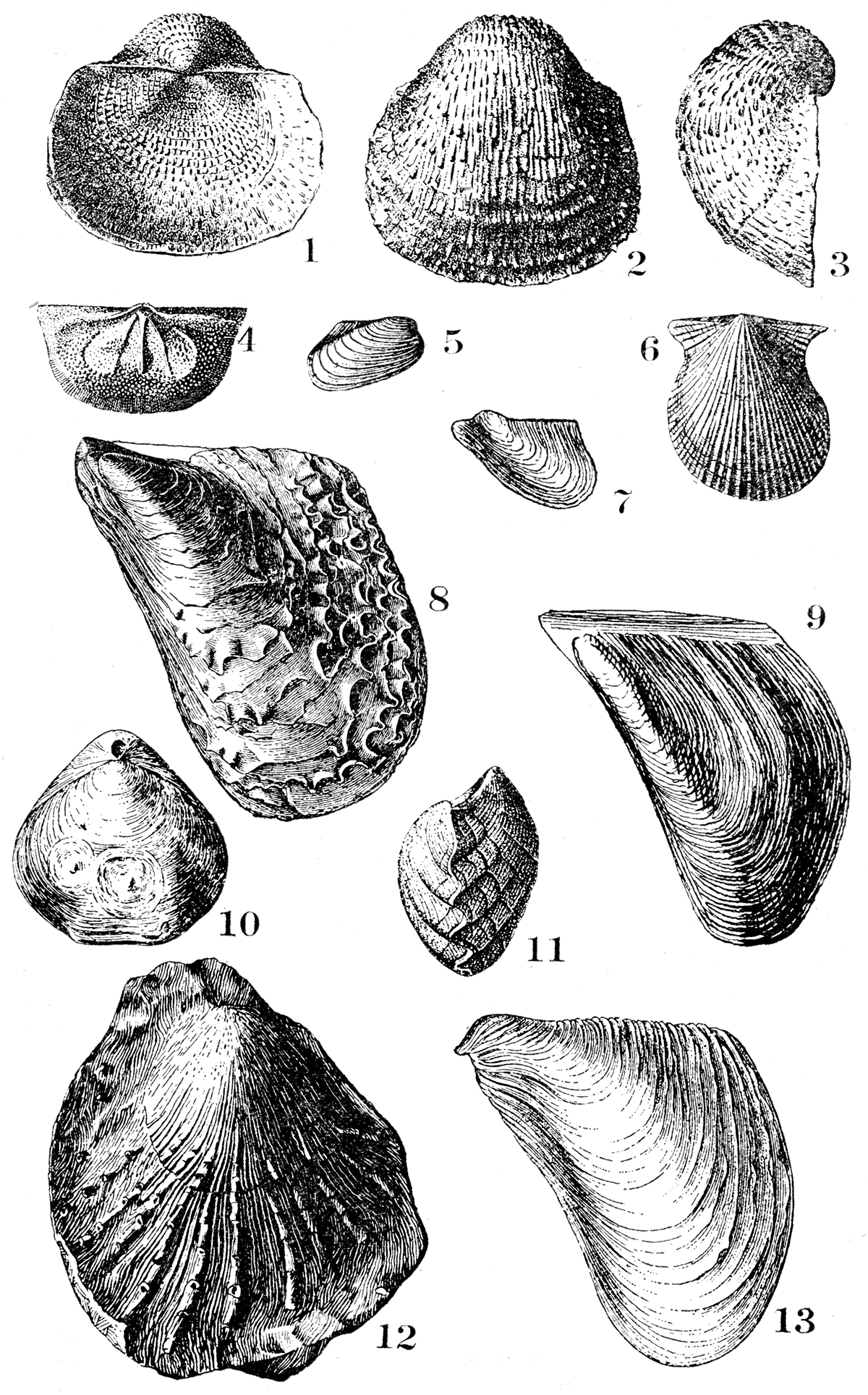
Plate IX—Typical fossils from the Cretaceous. Pelecypods: Inoceramus gilberti, a robust, coarsely concentric wrinkled shell. 1; Inoceramus labiatus, one of the commonest fossils in the Cretaceous of Kansas, 3; Ostrea congesta, an early oyster which lived in very large numbers in the Cretaceous seas of Kansas, view of interior of shell, 2. Cephalopods: Belemnitella baculus, a small, straight shell representing an earty squid, broken part of II specimen, 6; Scaphites vermiformis, a closely coiled, ribbed ammonite of the Benton, 4; Prionotropis woolgari, 7; Prionotropis hyatti, side view. 9, front view 5; Scaphites larvaeformis, 8. [Also available as a larger Adobe Acrobat version, 3.3 MB.]
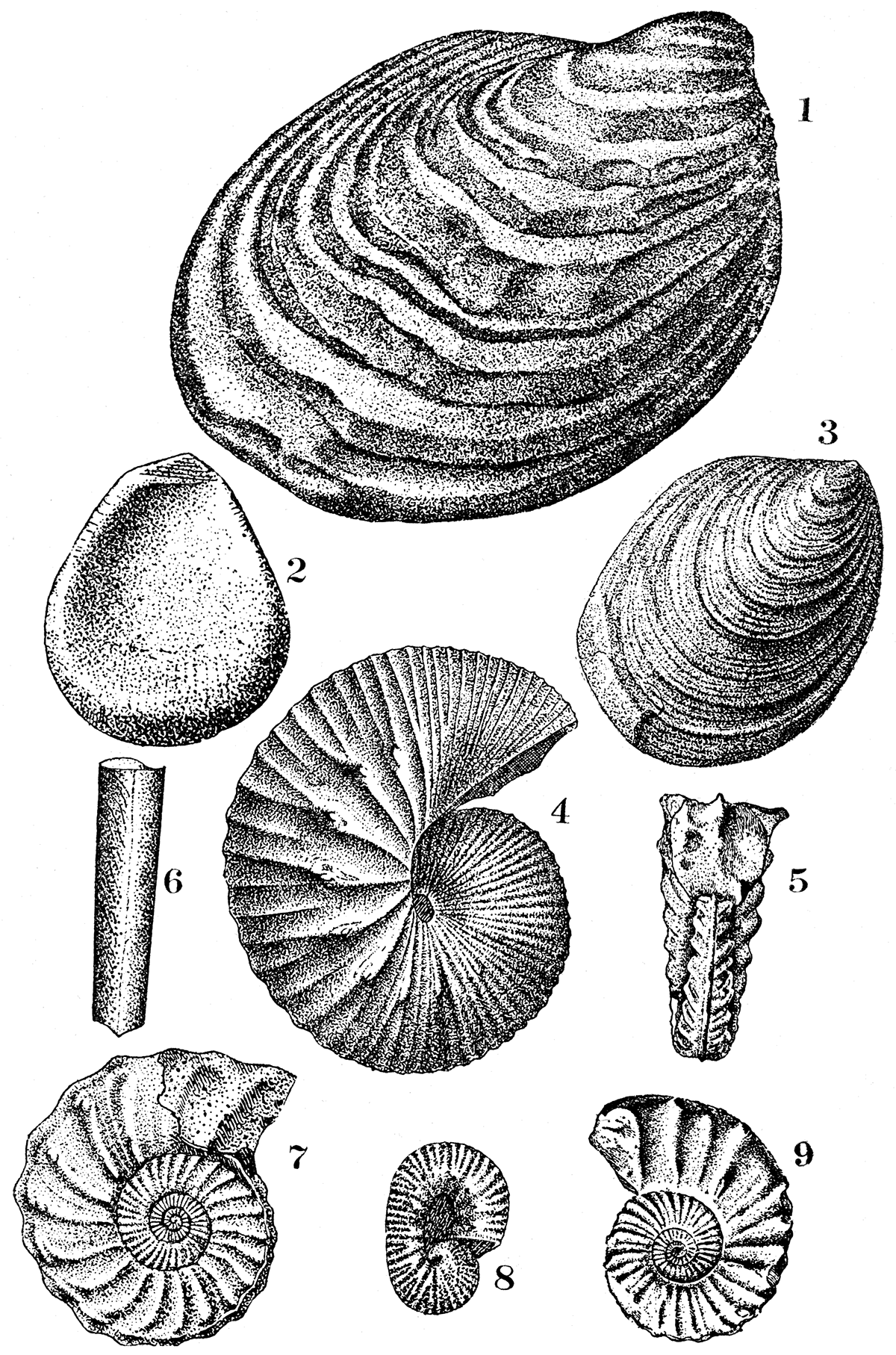
Plate XIV—Map showing location of geological sections A to H, plates XV to XVII. Also available as an Acrobat PDF file (1.9 MB).
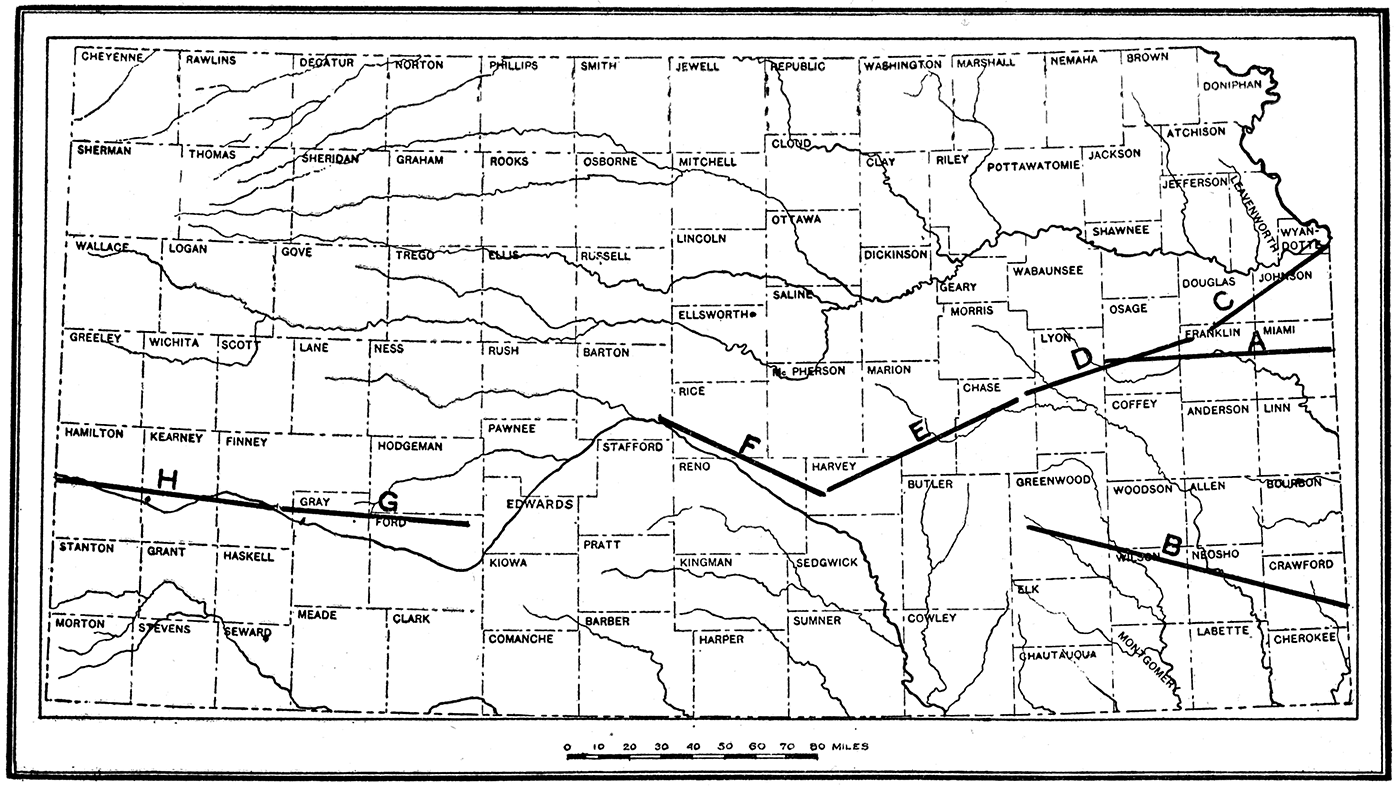
Plate XV—A. Section showing underground relations of rocks from the state line east of Paola to a point ten miles west of Osage City. B. Section showing underground relations of rocks from the state line east of Fort Scott to Burlington. Vertical scale greatly exaggerated, which has the effect of increasing the apparent tilt of the beds. Also available as an Acrobat PDF file (1.4 MB).
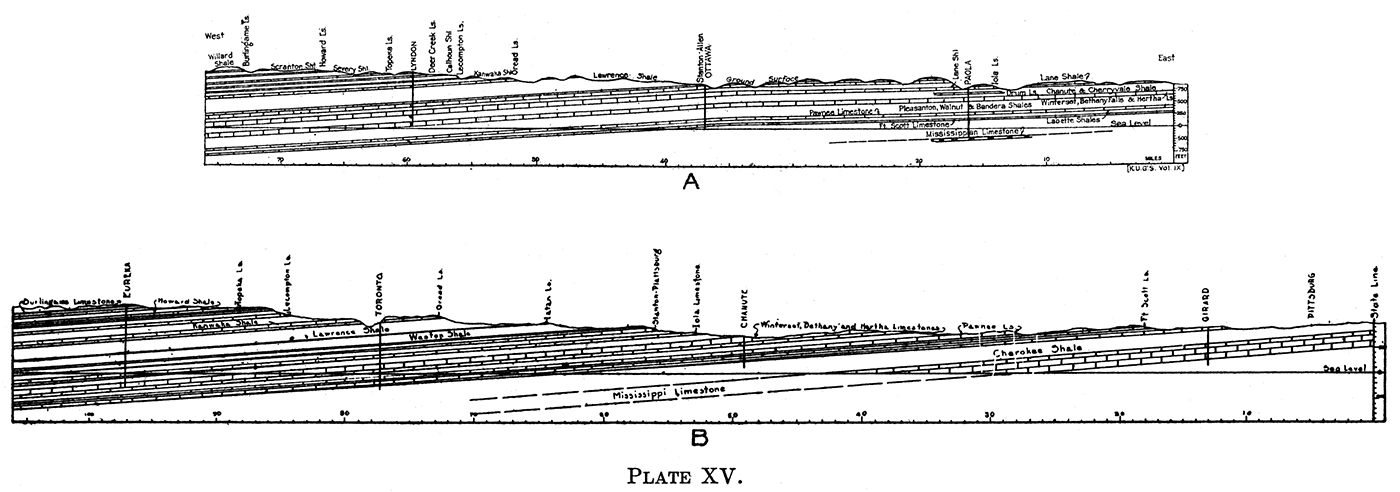
Plate XVI—C. Section from Kansas City through Olathe and Baldwin along the line of the old Santa Fe trail. D. Section from Pomona to point west of Emporia. E. Section from Strong City to Halstead. Also available as an Acrobat PDF file (2.2 MB).
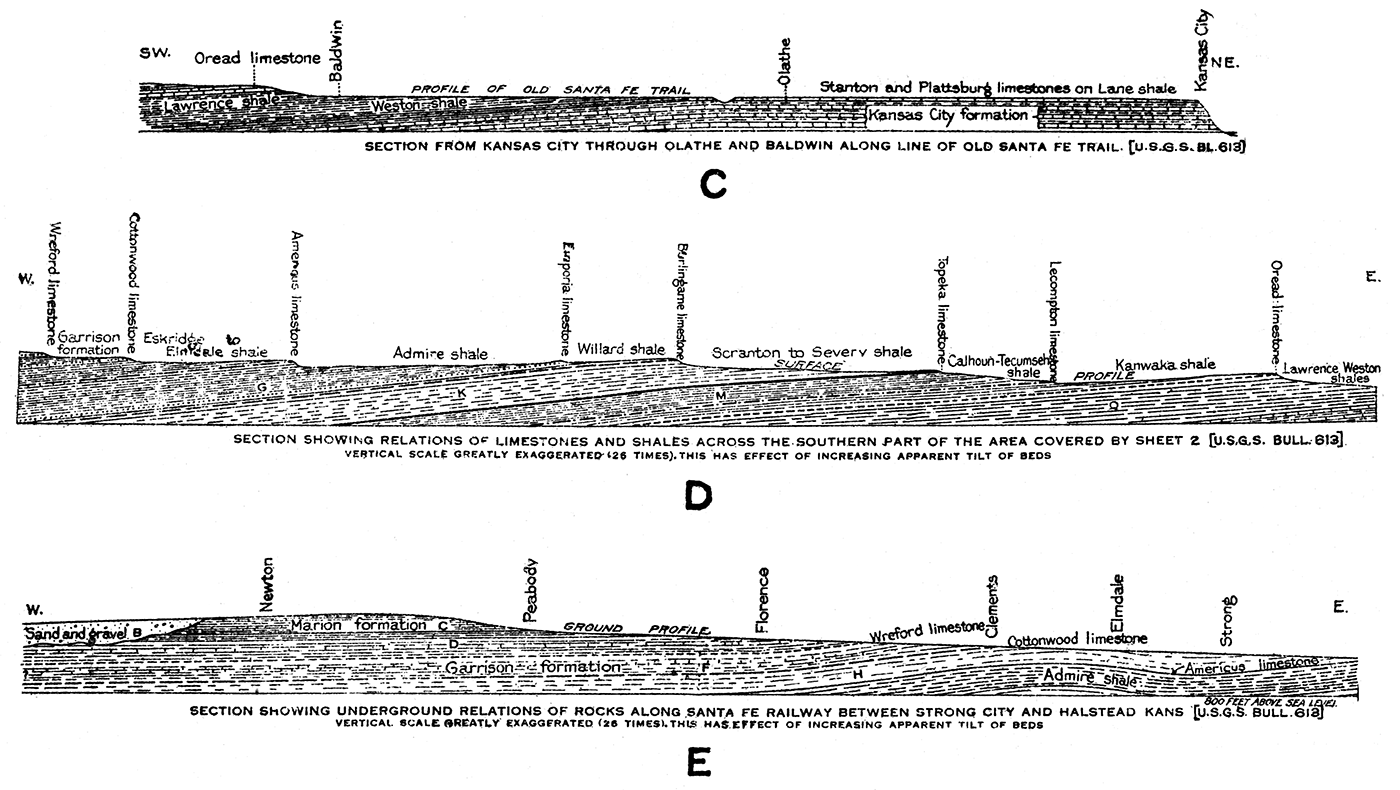
Plate XVII—F. Section from Paxton to Ellinwood. G. Section from Spearville to Mansfield. H. Section from Garden City to Medway. Also available as an Acrobat PDF file (2.2 MB).
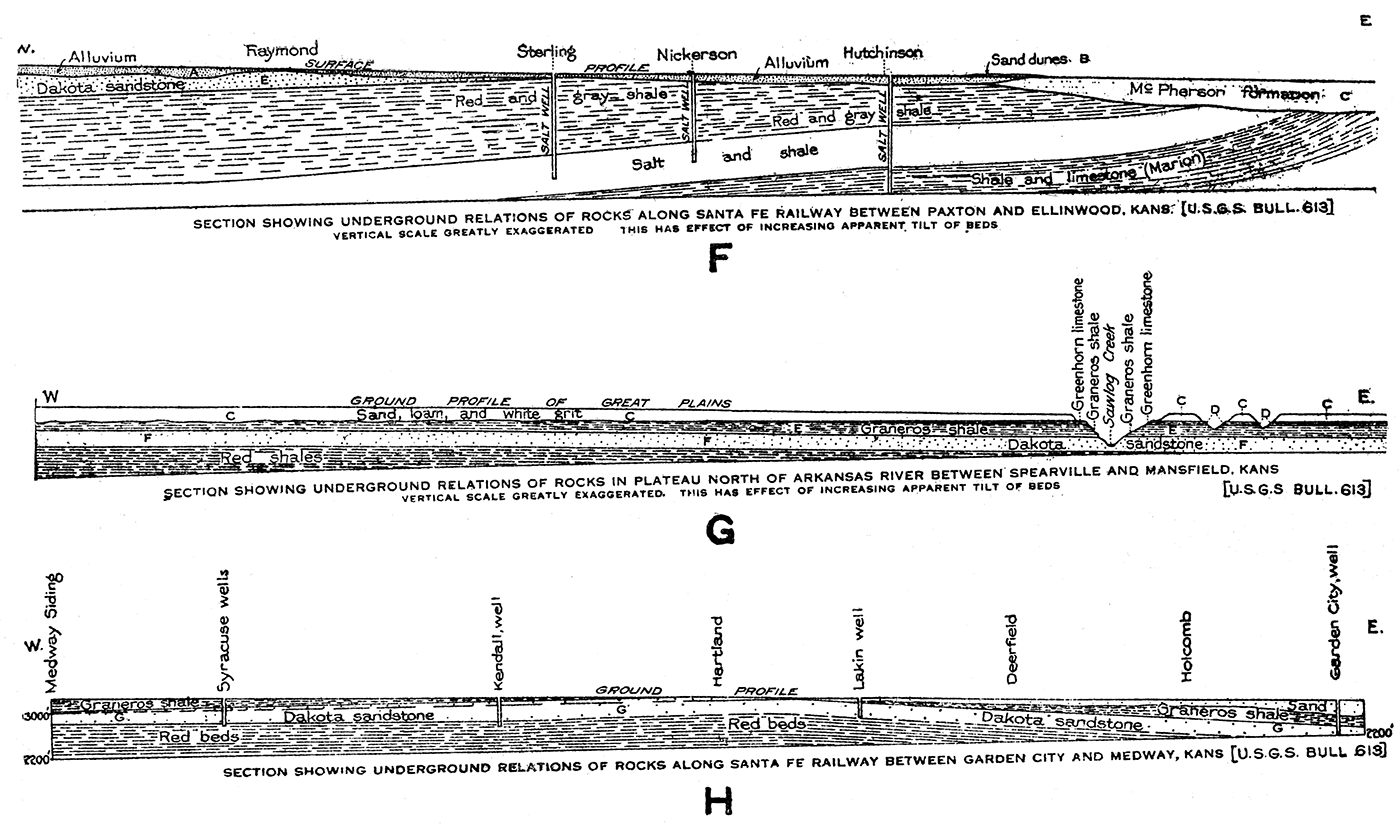
Kansas Geological Survey, Geology
Placed on web Sept. 15, 2017; originally published 1920.
Comments to webadmin@kgs.ku.edu
The URL for this page is http://www.kgs.ku.edu/Publications/Bulletins/6_2/07_plates.html